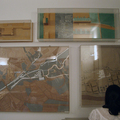Zucchi Architetti
— interview with principal Cino Zucchi
About
The studio Cino Zucchi Architetti is constantly searching spatial solutions for contemporary life in the delicate and rapidly changing context of the European landscape.
Its goal is to conjugate innovation and research with a professional completeness able to respond to complex programs at any scale, employing when needed a well-established net of specialized consultants (structures, plants, traffic, economy, landscape, graphics, light design).
— excerpt from http://www.zucchiarchitetti.comInterview Ideas
- Many Italian designers are coming to realize that Italian Design is not always Italian anymore. There is a certain degree of isolation that creates differences amongst different cultures, but this isolation is slowly decreasing.
- Slowness and time affect the design process
- Knowledge and ideas are shared between cultures through the import and export of knowledge
- Designers must consider the future implications of their work and the impact it will have on subsequent people, places, and contexts
- The media and tourism perpetuate stereotypes of culture and create an illusion that one can come to know a culture through exposure rather than first-hand experience
- There are two types of designers today: the ones that are pushed by the market to have a recognizable style, and the ones that consider language as a part of the design process, instead of something that is an attribute of the subject.
- Artists, designers, and architects should not strive to be something else, rather, they should be who they are; the result of their collective experiences and influences.
Video/Key Quotes
- Operating On Layers

- Globalization

- Import / Export of Knowledge

- Responsibility

- Movements vs. Gestures

What We Learned
The focus of this conversation was process. There was a significant emphasis on slowness, and time (specifically, the future) and how these affect design processes and final products. Cino Zucchi brought our attention to the idea of making design decisions that remain valid over time. Since architecture is long lasting, it tells us that we need to design and build well, and therefore it teaches us how to age well. Also, slowness is something to be savored and made into a quality of design.
Another revelation was the notion of the import and export of knowledge and how this is somewhat forgotten. The great thinkers and innovators of old (Leonardo, Michelangelo, etc) did not necessarily work or study in the place they were born. Knowledge and ideas are grafted and transplanted from one culture to another. This becomes more complex when one considers the ripple effect that ones work has on the future. We are all responsible for the effects that our work generates.
Lastly, in regards to authenticity, numerous intelligent points were raised regarding perceptions of culture. The media gives us what we feel is a familiarity of different cultures. We feel we can know a culture (or a specific aspect of one) without actually living it. Tourism further perpetuates this myth, and skews perceptions of authenticity. There is an increasing local problem as tourism spreads farther, and that is that authenticity starts to become more precious for the tourists than the locals.
